You’re sitting on the couch, phone in hand, thinking, “Just five more minutes.” Next thing you know, it’s been fifty, and you’re stuck scrolling through news, memes, and posts that somehow leave you feeling worse with every swipe. Time’s flying, your brain’s feeling fried, but your thumb? It’s on cruise control, refusing to stop.
This whole doomscrolling thing? It’s not just about losing track of time. Social media platforms are built to keep you glued to your screen, and their algorithms are the ones calling the shots. They know exactly how to play with your emotions and habits to make sure you stick around longer than you planned.
Let’s break down the sneaky tricks these platforms use to keep us scrolling and how it messes with your head. Once you know what’s going on behind the scenes, it’s a lot easier to take back control.
Table of Contents
The Sneaky Tricks Social Media Uses to Keep You Hooked
Let’s talk about the less obvious ways social media platforms keep us glued to our screens, sometimes for way longer than we planned. These aren’t your run-of-the-mill tactics—they’re sneaky, clever, and designed to mess with our brains. Here’s the scoop:
1. The Waiting Game: Delayed Notifications
Ever notice how your Instagram likes don’t all show up at once? That’s not a glitch—it’s by design. Platforms love to make you wait, sprinkling in those little dopamine hits over time so you keep coming back to check for more.
What’s Going On: This taps into something called intermittent reinforcement, which is just a fancy way of saying, “Rewards that show up randomly are way more addictive.” Think slot machines—but for your notifications.
The Numbers Don’t Lie: A study found that when notifications came in clusters instead of instantly, people spent 32% more time scrolling.
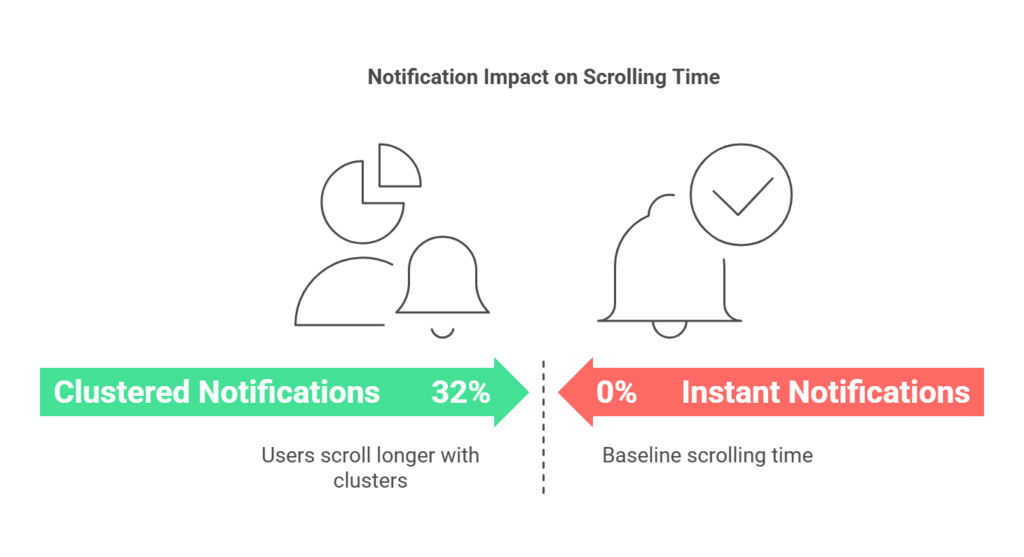
What the Experts Say: Dr. Natasha Schüll, who’s studied how we get hooked on stuff, compares it to gambling. It’s all about keeping you on the edge of your seat, wondering when the next hit will come.
2. The FOMO Effect: Blink-and-You-Miss-It Content
Stories that vanish in 24 hours? Trending hashtags that fade as fast as they appeared? Platforms know you hate missing out. They play on this fear by making everything feel urgent.
Why It Works: When something’s only around for a hot minute, we feel like we have to act right away. It’s basic psychology—scarcity makes things seem more valuable.
Stat Attack: Time-sensitive content is 40% more likely to pull people in, according to one study. Scarcity = engagement gold.
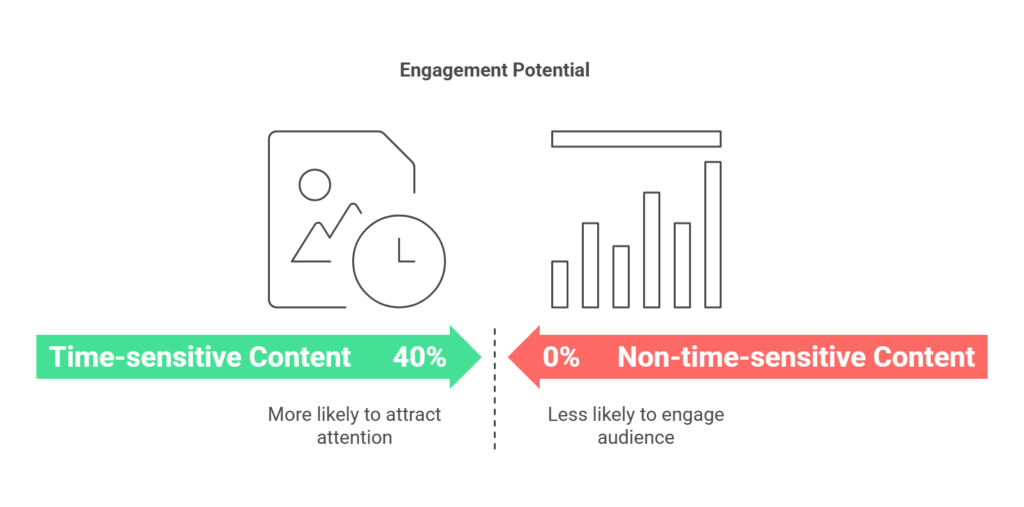
3. Testing Your Emotions, One Post at a Time
Ever wonder why your feed feels like an emotional rollercoaster? One minute, you’re laughing at a funny dog video, the next you’re furious over some political rant. That’s not random—it’s a calculated move.
Here’s the Deal: Platforms run experiments all the time to see what makes you tick. They toss in all kinds of posts—happy, sad, angry—and then track what gets you to stick around the longest.
Fun Fact (or Creepy Fact?): Facebook reportedly ran 6,000 experiments in one year to fine-tune this strategy. Yep, you’re basically a lab rat.

4. The Power of Red
Those little red notification badges? They’re not red by accident. Red screams urgency. It’s like your phone is yelling, “Hey! Look at me!”
Does It Work? Oh, yeah. A study found that red badges boosted click rates by 18% compared to boring, neutral colors.
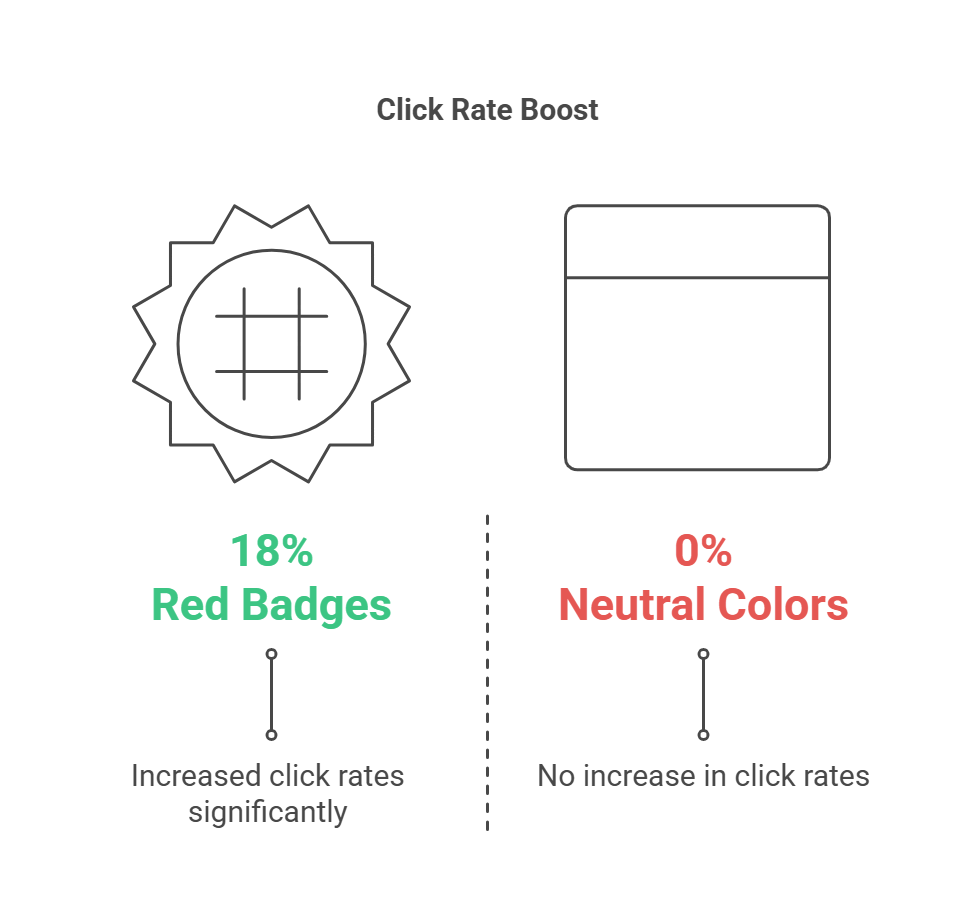
What If They Were Blue? Imagine if your notifications were chill green or blue instead of stop-sign red. You’d probably feel way less inclined to drop everything and check them.
5. Creepy-Accurate Predictions
TikTok knows you better than your best friend—and it’s not even subtle about it. After just a few minutes of scrolling, it’s already predicting what you want to see next, even if you didn’t realize you wanted to see it.
How Fast? According to reports, TikTok’s algorithm can figure out your vibe in just 10 minutes. It’s like it’s in your head.
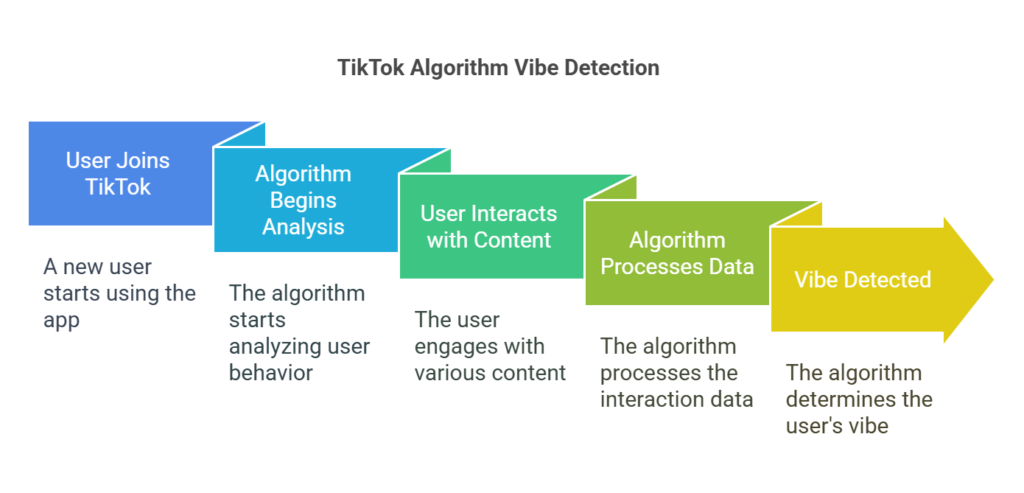
Why It’s Addictive: When the app feels this tailored to you, it’s hard to put it down.
6. The “Almost Jackpot” Trick
Ever notice how your feed is mostly “meh” posts, but then—BAM!—you stumble on something amazing? That’s on purpose. Platforms mix in just enough great content to keep you scrolling, hoping for the next big win.
Why This Works: It’s called the “near win” effect. Studies show that the anticipation of something awesome is more addictive than the awesome thing itself.
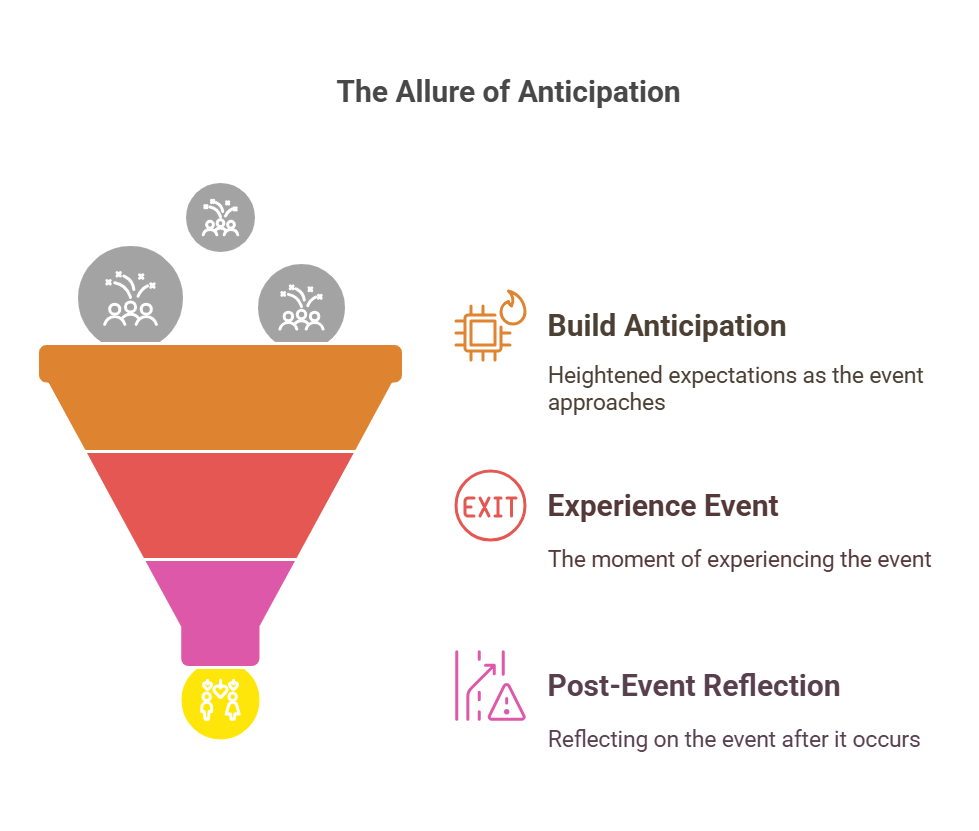
Think About It: Your feed is like a slot machine—sometimes you win, most of the time you don’t, but you keep playing anyway.
7. Silent Stalking: What You Don’t Click Still Counts
Even if you don’t like, comment, or share something, platforms are watching. They track how long you hover over a post or video to figure out what catches your eye.
Example: Let’s say you pause for a second on a post about coffee trends. Suddenly, your feed is full of latte art and coffee memes.
The Big Picture: Dr. Cathy O’Neil says this kind of invisible tracking doesn’t just personalize your feed—it can trap you in a bubble, narrowing what you see and messing with your perspective.
8. Fueling the Fire: Outrage = Engagement
Ever wonder why you see so many posts that make your blood boil? It’s not a coincidence. Platforms know that outrage gets clicks—and clicks mean money.
The Stats: Research shows that posts with polarizing language are 70% more likely to be shared. Algorithms love that.
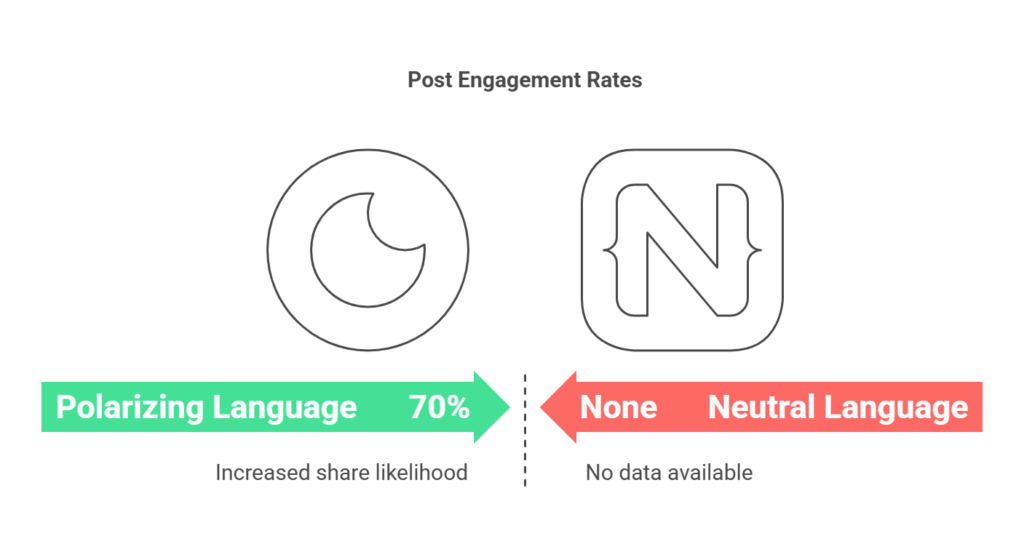
The Problem: This creates echo chambers where extreme views get amplified, making everything feel more divisive than it really is.
9. Gamifying Your Attention
Social media turns engagement into a game. Think Snap Streaks, follower counts, or those little progress bars. They’re designed to make you feel like you’re winning—even though, let’s be real, there’s nothing to win.
Teen Drama: A survey found that 72% of teens feel pressured to keep Snap Streaks alive—even when they’re busy with, you know, life.
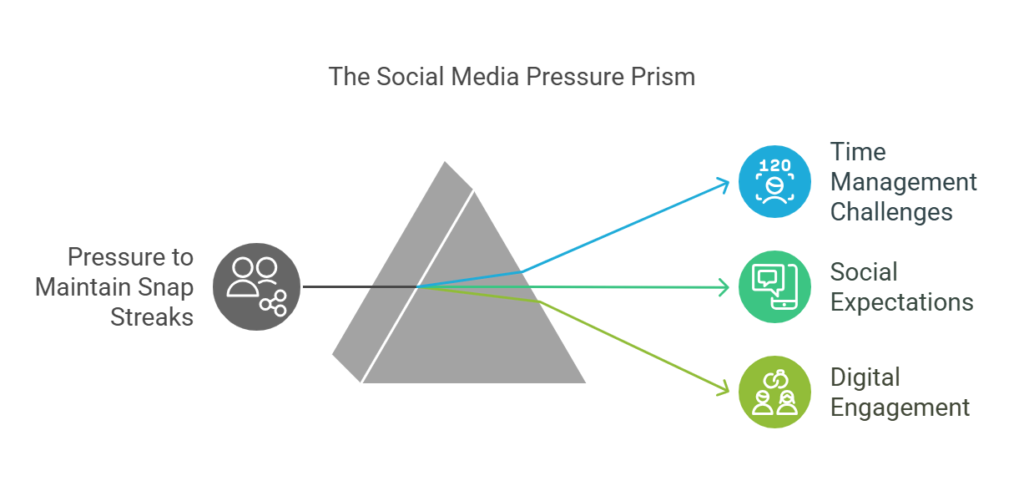
Why It’s Addictive: Gamification scratches that competitive itch, turning even meaningless interactions into something that feels important.
10. Fake Personal Touches
Ever get a notification like, “Your friend [Name] just posted for the first time in a while!” or “We think you’ll love this”? Yeah, that’s not as personal as it seems. It’s just another trick to get you to click.
Why It Works: Personalization makes us feel special—even when it’s totally fake.
The Stats Back It Up: Personalized nudges boost re-engagement rates by 25%. That’s a lot of clicks for something that’s not even real.
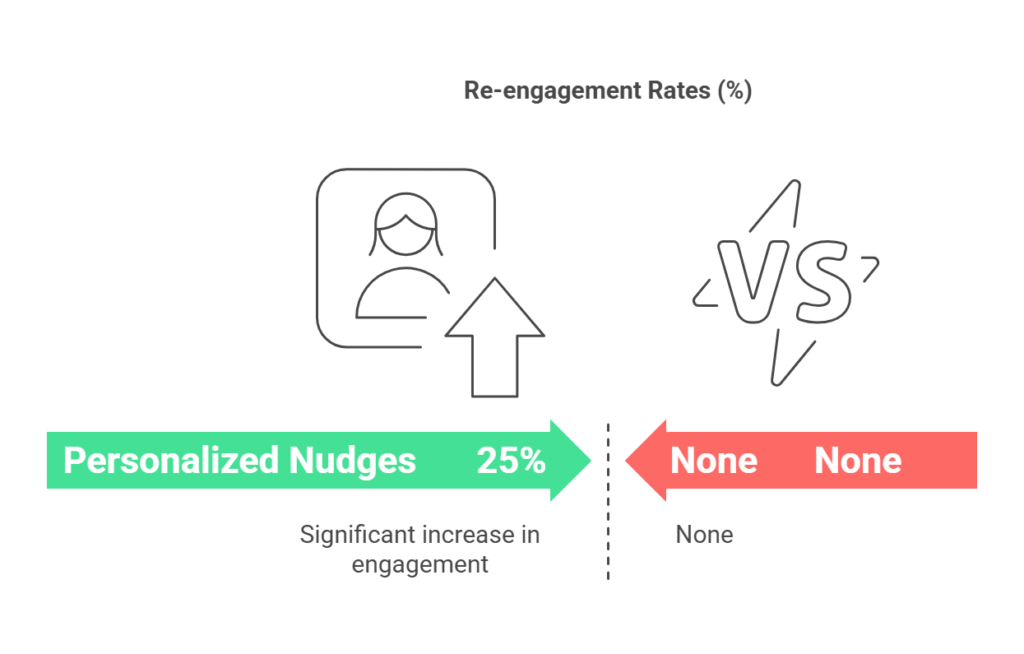
How to Outsmart These Sneaky Tricks
These strategies might be subtle, but they all boil down to one thing: keeping you glued to your screen. The good news? Once you know the game, you can beat it. Here’s how to take the wheel back:

- Kill the Noise: Turn off notifications that aren’t super important. Your phone doesn’t need to ding every time someone likes your photo.
- Clean Up Your Feed: Use tools like “Not Interested” or mute buttons to block stuff that stresses you out. No one needs that kind of energy.
- Unplug on Purpose: Set aside some screen-free time each day. Whether it’s dinner, a walk, or just chilling, give your brain a break. Apps like RescueTime can help if you need a little nudge.
- Think Before You Click: If a post is trying to rile you up, ask yourself if it’s worth your time. Don’t let outrage bait or drama pull you into the vortex.
At the end of the day, you’re the one in charge. Don’t let some algorithm decide how you spend your time. You’ve got the wheel—drive where you want to go.r it is to steer the wheel—and stop letting your phone call all the shots.
Final Thought
Social media is designed to hook you, but now you know the tricks—and knowing is half the battle. By being mindful of these tactics, you can scroll smarter, feel better, and get your time back. Remember, it’s okay to log off. The world (and your mental health) will thank you.
FAQs
Why do social media platforms care about keeping us engaged?
It’s all about the cash. Social media makes money through ads, and the longer you stick around, the more ads they can throw at you. More ads = more dollars in their pocket.
Is doomscrolling the same as regular scrolling?
Not quite. Doomscrolling is when you’re stuck reading a bunch of bad news or depressing content that leaves you feeling anxious or hopeless. Regular scrolling is just…scrolling. No emotional baggage attached.
Can positive content also contribute to doomscrolling?
Not really. Positive stuff might keep you scrolling for a while, but it doesn’t mess with your head the same way negative or stressful content does. That’s the stuff that really hooks you.
Do algorithms intentionally promote doomscrolling?
Not on purpose. Algorithms are just programmed to push content that gets a big reaction out of you. It just so happens that fear and outrage grab our attention more than happy-go-lucky stuff.
Does doomscrolling affect sleep quality?
Absolutely. If you’re reading stressful news before bed, your brain stays in overdrive, making it tough to wind down and fall asleep. Basically, bad vibes don’t pair well with pillow time.
Studies and References
- Intermittent Reinforcement and Social Media Addiction
- Time-Sensitive Content and User Engagement
- Color Psychology in Notifications
- Predictive Algorithms and User Behavior
- Gamification and User Engagement
- Personalized Nudges and Re-engagement







